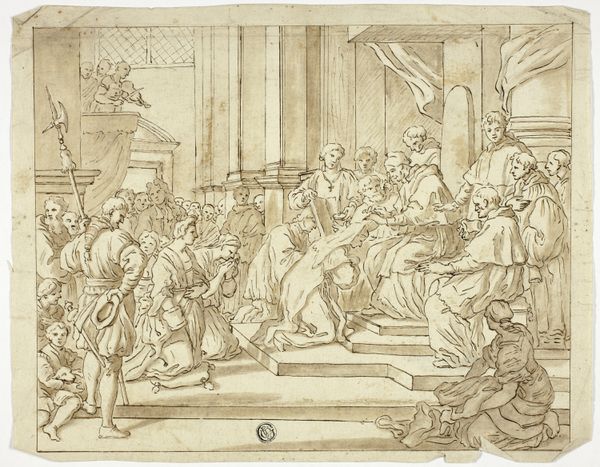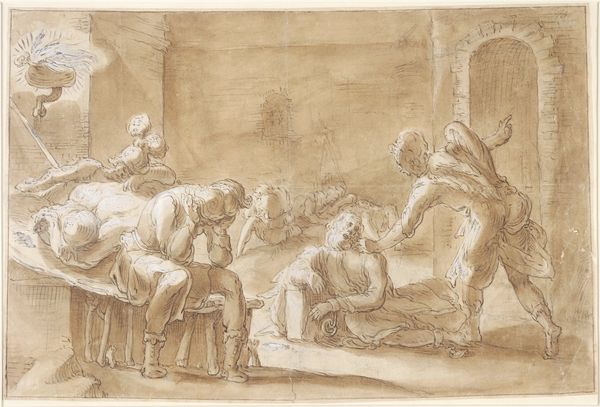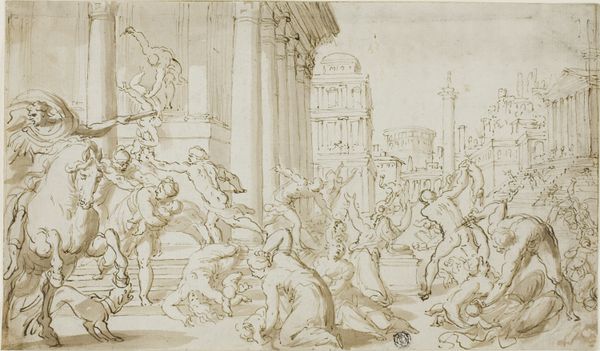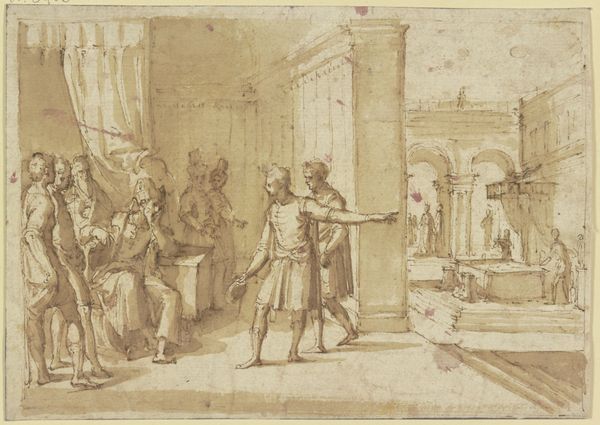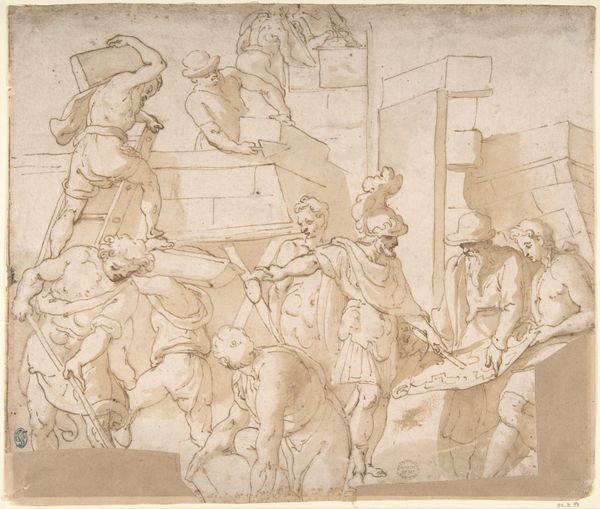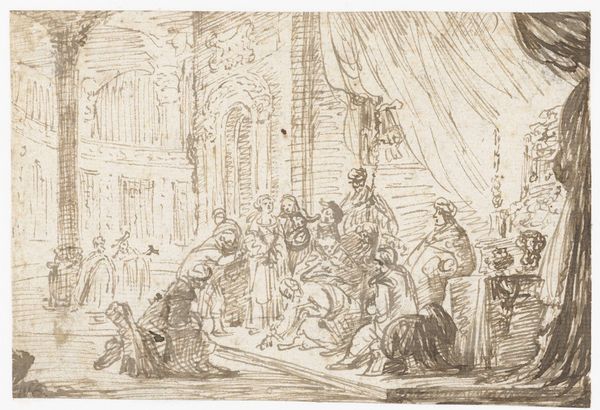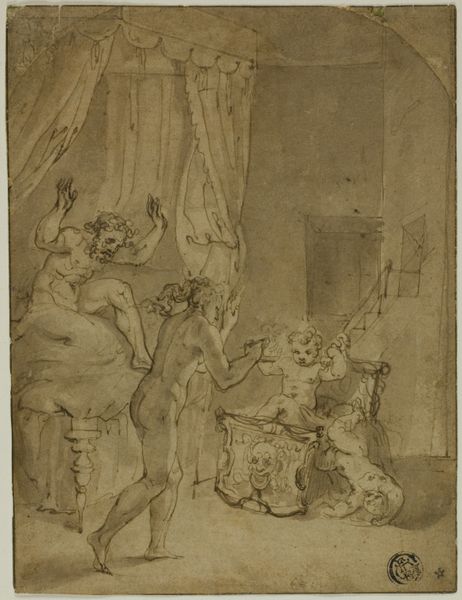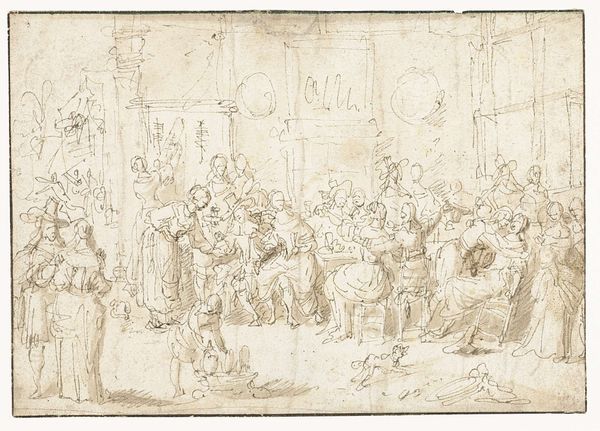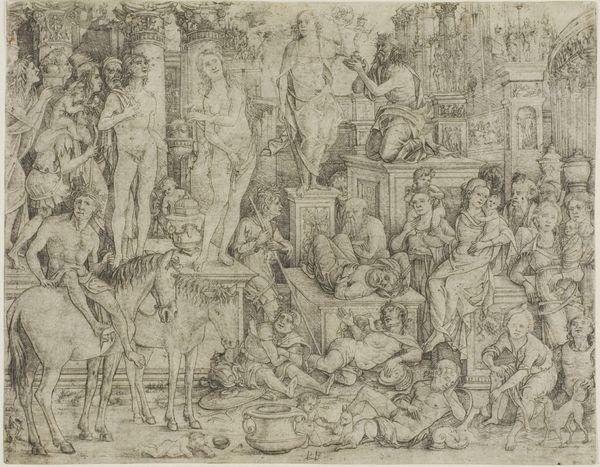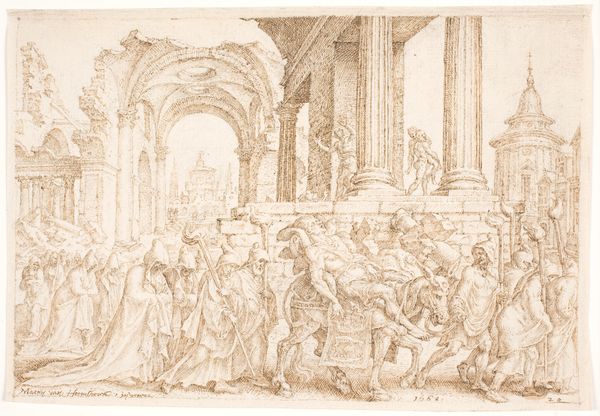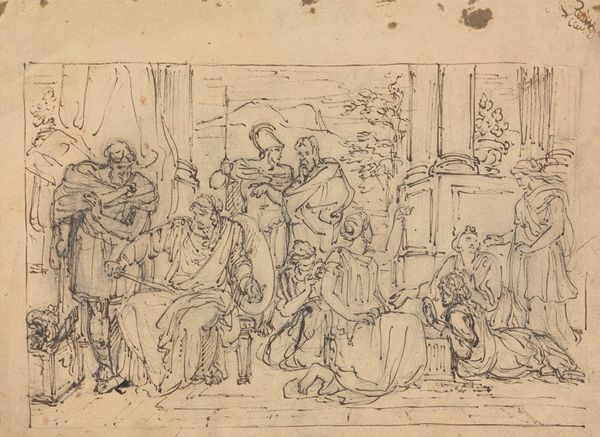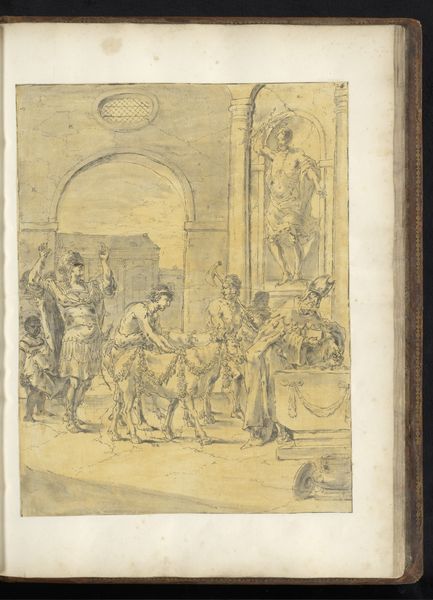
drawing, paper, ink, pencil
#
portrait
#
drawing
#
baroque
#
figuration
#
paper
#
ink
#
pencil
#
genre-painting
Dimensions: height 372 mm, width 463 mm
Copyright: Rijks Museum: Open Domain
Curator: Oh, this is intriguing. We're looking at "Musicians in a Loggia" by Leonaert Bramer, created sometime between 1606 and 1674. It’s rendered in pen, pencil, and ink on paper. What strikes you about it? Editor: The almost dreamlike quality of it. It feels both elaborate and ephemeral, like a memory half-recalled. The architecture, the figures... they’re all sketched with a lightness that suggests a fleeting moment. Curator: Indeed. The loggia setting immediately suggests a space of transition, a semi-public, semi-private area. Think of the loggia in relation to the arts. The musical performance isn't happening in a church or even within a private chamber. It hints at something ceremonial or theatrical. Note the musical theme but also figuration and a genre-painting approach. What does this convergence propose? Editor: It feels consciously performative, even the 'real life' element is still a performance. It reminds me of watching street performers set against a baroque backdrop—that contrast of cultivated elegance meeting everyday observation. The dog feels very ‘everyday’, as does the person in the background. Curator: Precisely! And what do the instruments symbolize to you? Editor: The lute is fascinating. Often associated with courtly love, leisure, and refinement—while the cello has that soulful depth. Together they hint at harmony and sophistication, yet there's an accessibility brought by their presence within what seems to be an open space. Like this moment can be shared. Curator: The arrangement also creates interesting tension. We’ve got this combination of spontaneity and calculated harmony – just like the drawing technique itself, spontaneous but purposeful. Look closely and it looks as if they all mirror the direction, leaning in towards each other like in a dance. It feels like an invite into their circle of music. Editor: Right, like Bramer’s inviting us to lean in, listen, and find beauty in that liminal space where life meets art, sound becomes vision. The ink and the paper, together, makes the music heard as visual memory, not unlike an actual sonic memory is stored. Curator: Yes. And this balance between deliberate placement and offhand impression brings to mind the social role of art itself at that time. It's meant for display, but also intended for intimate contemplation. Editor: Which makes it all the more special, knowing we can share in it now, centuries later. Art bridging distances, spaces, and sounds echoing. Curator: Absolutely, a fleeting yet resonant echo.
Comments
No comments
Be the first to comment and join the conversation on the ultimate creative platform.
